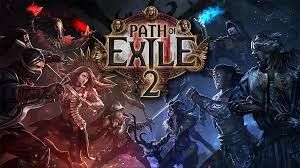Mastering the art of resetting instances is a fundamental skill for any player serious about efficiency and progression in the world of Path of Exile. As we look forward to Path of Exile 2, this core mechanic is expected to remain central to the gameplay loop of farming currency, acquiring powerful items, and gaining experience. While specific UI elements or keybinds may be updated in the sequel, the underlying principles of instance management will almost certainly be carried over from its predecessor. Understanding how, when, and why to reset your game zones is the difference between a slow, meandering journey and a highly optimized and rewarding one, especially when aiming to maximize returns similar to trading in PoE 2 Currency.
The Core Mechanic: How to Manually Reset an Instance
In Path of Exile, an "instance" is a personal copy of a zone generated the moment you enter it. This includes all the monsters, chests, and the specific layout of the area. To farm a zone repeatedly, you cannot simply exit and re-enter, as this would place you back into the same, now-empty instance. You must create a new one. Based on the long-standing system in Path of Exile 1, the method in Path of Exile 2 is anticipated to be very similar.
- Navigate to the Zone Entrance or Waypoint: Move to the entrance of the zone you wish to reset or open your map to view its waypoint.
- Use the Modifier Key + Click: While holding the Control (Ctrl) key, left-click on the desired waypoint or zone entrance.
- Access the Instance Manager: This action opens the "Instance Manager" window, listing all currently active instances for that zone.
- Create a New Instance: Click the "New" button to generate a fresh, populated instance of the zone for immediate entry.
This process enables rapid farming. Players can clear a zone, return to town, create a new instance via the waypoint, and re-enter without delay—crucial for high-volume monster farming strategies.
Strategic Applications: When and Why to Reset Instances
Knowing how to reset an instance is only part of the equation; knowing when and why to do so is what separates novices from veterans. The decision to reset is tied to specific objectives.
High-Efficiency Loot and Experience Farming
The most common reason to reset instances is for general farming. This involves targeting a campaign zone with high monster density, a linear layout, and manageable enemies. Players clear the zone, collect loot and experience, then reset and repeat. This "zone farming" method is a primary approach to gathering currency and leveling before the endgame Atlas of Worlds.
Target-Farming Specific Content
- Boss Uniques: For unique items from specific bosses (e.g., Hailrake on The Tidal Island for an early Quicksilver Flask), rush to the boss, defeat it, then reset to repeat the fight.
- Divination Cards: Some zones have higher drop rates for certain Divination Cards. Resetting allows repeated farming for these cards.
- League Mechanics: Certain zones may be ideal for spawning current league mechanics like Essences, Blight, or Legion. Resetting increases encounter frequency.
Optimizing Zone Layouts
Procedurally generated layouts vary in efficiency. If a zone has a sprawling or backtracking-heavy layout, resetting for a more linear design can save significant time, especially in non-map areas.
Instance Management: Timers and Party Play
Beyond manual resets, understanding automatic instance systems is essential for both solo and group play.
The Automatic Instance Timer
An instance remains open only for a limited time without a player inside, typically between 8 and 15 minutes. This impacts gameplay in several ways:
- Losing Portals: In endgame maps, leaving for more than 8-15 minutes can close the instance and remove remaining portals.
- Passive Resets: Waiting in town allows the timer to expire, creating a new instance upon re-entry. This is slower but requires no active input.
| Feature | Manual Reset (Ctrl+Click) | Automatic Timeout |
|---|---|---|
| Speed | Instantaneous; ideal for maximum farming speed. | Slow; requires 8-15 minutes of inactivity. |
| Control | Full control over reset timing. | No control; server determines closure. |
| Primary Use Case | Active farming for currency, items, or experience. | Passive resetting during breaks or inventory management. |
| Player Action | Requires Ctrl+Click input. | No input needed beyond leaving the instance. |
Instances in Party Play
In parties, the first player to enter a zone becomes its "owner." Other members join this same instance. To create a new one, any member can use Ctrl+Click, and the rest can join the fresh instance. This coordination enables efficient group farming.
As Path of Exile 2 approaches, players can be confident that instance management will remain a core feature. While the interface may evolve, the strategic value of controlling your game world for optimal efficiency will persist, much like the importance of trading and managing cheap path of exile 2 currency in maximizing in-game progress.
